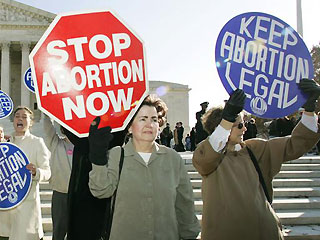Richard Nixon and the Whales
 Monday, January 21, 2013 at 12:42PM
Monday, January 21, 2013 at 12:42PM 25,000 California grey whales have hit the road for their annual migration from the rich feeding grounds of Alaska to the warmer birthing waters of Mexico’s Baja lagoons. I saw a couple of them today, swimming south just a few hundred yards off shore. They surfaced, blew air out of their spouts, took a quick look, and resumed their 4 knot per hour swim.
It’s a 6000 mile journey, 12,000 round trip, south around Christmas, back north early spring, longest migration of any mammal. They swim so close to shore because it’s shorter, a more direct route, because it’s safer, especially coming back north with their young babies, who are easy prey to hungry orcas, and because, scientists think, they might actually navigate by sight; “Look we’re in Monterey already, half way there!” As a guide at the Monterey Bay Aquarium I tell guests that the whales, after feasting all summer on the rich amphipods of the Bering Sea, notice it’s getting cold and say, “Hey, I have an idea. Let’s go to Mexico and have babies.”
Grey whales were hunted so aggressively that they almost became extinct in the last century, just as their Atlantic cousins were exterminated in the 18th century. An international commercial whaling industry slaughtered and harvested them by the thousands for their oil and bone. Whaling ships scoured the ocean for humpbacks and sperm and all kinds of whales, but the greys were easier to hunt because of their predictable and coastal migration. And when the hunters finally found the Mexican birthing lagoons, they just waited at the narrow entrances and turned the waters red with their blood.
Who saved the whales? Human compassion for our fellow higher mammals? Animal activists and recordings of whale songs? No, it was kerosene and Richard Nixon.
I was taught that whale oil was so valuable because it gave light to dark Colonial American homes; I had this romantic image that the slaughter was not in vain if Thomas Jefferson could see to write the Declaration of Independence by a whale oil lamp. But the whale slaughter was also fueled by the gears and wheels of the Industrial Revolution. All those cogs needed grease to move. First the Atlantic and then Pacific whales kept those machines humming. But mid 19th century inventors in the US, Poland and Scotland each figured out how to turn coal into an inexpensive liquid fuel which is called kerosene in the US, paraffin in the UK, Asia and South Africa. Almost overnight the whale oil industry crashed.
But the whales weren’t safe yet. Some nations still whaled (and still do.) And the whale population was so decimated it struggled for decades to recover.
 Richard NixonThat’s where Richard Nixon comes in. It’s hard to remember that Nixon, President “Actually, I am a Crook” was a far different kind of Republican than we’ve seen in these parts for a long time since. Environmental protection passed during his administration include the Clean Air Act, Clean Water Act, National Marine Sanctuaries Act, the Marine Mammal Protection Act and the Endangered Species Act. In 1972 it became illegal to threaten, harass or kill any marine mammal in US waters and the endangered species list included grey whales. That same year the United Nations passed a resolution calling for an end to commercial whaling.
Richard NixonThat’s where Richard Nixon comes in. It’s hard to remember that Nixon, President “Actually, I am a Crook” was a far different kind of Republican than we’ve seen in these parts for a long time since. Environmental protection passed during his administration include the Clean Air Act, Clean Water Act, National Marine Sanctuaries Act, the Marine Mammal Protection Act and the Endangered Species Act. In 1972 it became illegal to threaten, harass or kill any marine mammal in US waters and the endangered species list included grey whales. That same year the United Nations passed a resolution calling for an end to commercial whaling.
In those Baja lagoons today grey whales frolic freely and safely, both birthing and mating. Instead of blood red waters there are small, carefully regulated local whale watching companies. The fantastic book Eye of the Whale by Dick Russell about the grey whales tells the story of how the budding environmental movement in Mexico solicited international pressure to protect the lagoons, and then fought off a more recent effort by Mutsubishi to build a huge salt plant there. Turns out that old Industrial Revolution, now dominated by the tech industry, is just as hungry for salt and other chemicals. Once again the whales almost lost out to human progress.
 Baja Lagoons, MexicoAs those locals take you out in small zodiacs on the lagoon, the mother whales, 40 ft long, 40 tons, push their babies (a mere 10 feet long, 10 tons) up against the boats, and you can reach out and touch them. The locals call them “los ballenos amicabiles”, the friendly whales. One thrash of her tail and we’d all be in the water. But that never happens. An old fisherman first noticed this curious behavior in 1972, the calm approach by the mothers, the babies resting beside humans. As a child he’d seen the whales avoid the boats, or even attack them. But now they approach and look you straight in the eye. Ocean scientists Sylvia Earle says, “Whale watching takes on a whole new meaning when the whales are watching you.”
Baja Lagoons, MexicoAs those locals take you out in small zodiacs on the lagoon, the mother whales, 40 ft long, 40 tons, push their babies (a mere 10 feet long, 10 tons) up against the boats, and you can reach out and touch them. The locals call them “los ballenos amicabiles”, the friendly whales. One thrash of her tail and we’d all be in the water. But that never happens. An old fisherman first noticed this curious behavior in 1972, the calm approach by the mothers, the babies resting beside humans. As a child he’d seen the whales avoid the boats, or even attack them. But now they approach and look you straight in the eye. Ocean scientists Sylvia Earle says, “Whale watching takes on a whole new meaning when the whales are watching you.”
The author of Eye of the Whale asked locals and experts why the whales became so friendly in 1972, why these “encounters of the first kind?” Various theories. My favorite? What else happened that year? The Marine Mammal Protection Act and the UN resolution. Maybe whales were saying, “OK, thanks for that. It’s a start. Better late than never. Let’s communicate. Let’s begin maybe a little trust. Here, meet my baby.”
Thanks, Dick.
Copyright © 2013 Deborah Streeter.












